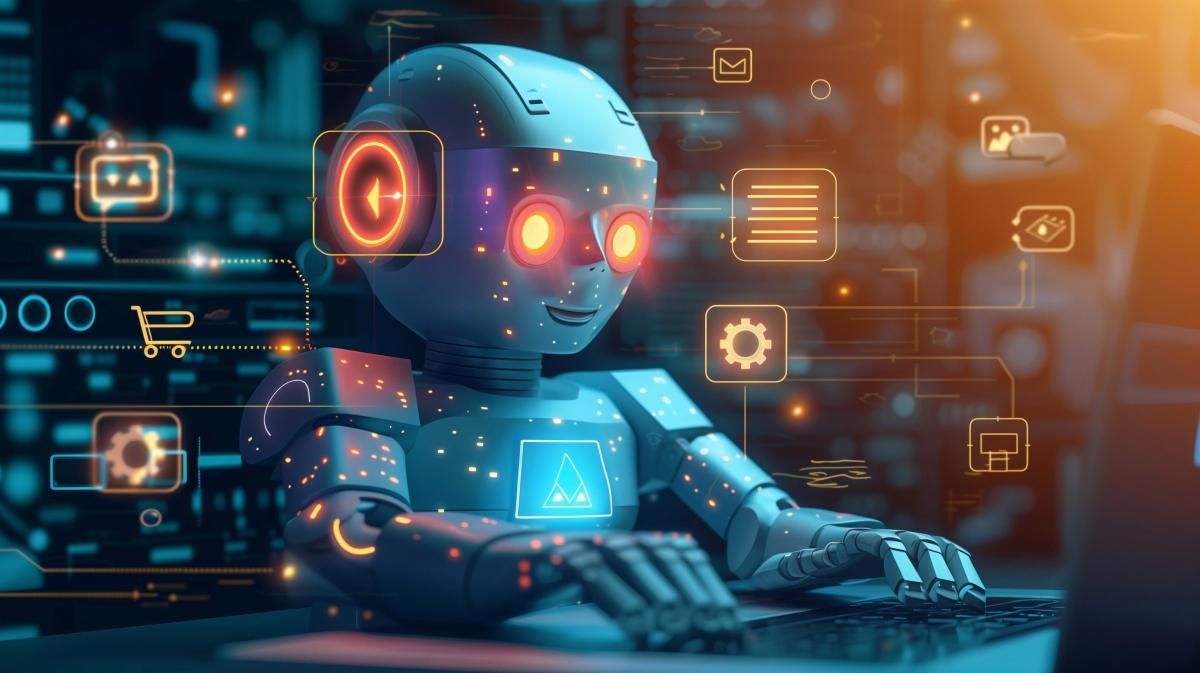Most AI Websites Fail to Rank

- Nov 18, 2025 modified: Nov, 18 2025
Most AI Websites Fail to Rank
Pretty But Invisible: Why Most AI Websites Fail to Rank on Google
For a technology that claims to build fully functional websites in seconds, one might expect the internet to be overflowing with AI-generated creations. Yet after countless searches, it becomes clear that such sites are surprisingly hard to find.
A simple Google query for "AI-generated website examples" or "websites made using AI tools" mostly brings up promotional content: endless lists of AI builders, tutorials, and glowing promises of instant online success.
What's missing are the actual URLs of live, functioning websites that were built entirely by artificial intelligence.
The few that do appear, such as those generated through Durable or Mixo, often belong to small businesses with limited reach. SEO analytics reveal a consistent pattern: minimal traffic, little to no keyword visibility, and virtually no online presence.
Even Microsoft's CoPilot has acknowledged the difficulty of locating such sites, noting that most AI builders allow users to export finished projects to their own custom domains. As a result, the AI origin becomes invisible unless explicitly disclosed.
The Illusion of Instant Websites
AI website builders promise a revolution: type in a business name, answer a few short questions, and within minutes, a fully designed website appears. Platforms such as Durable, Mixo, and GoDaddy's AI Website Builder advertise effortless creation: no coding, no design skills, and no web developer required.
On the surface, these tools deliver exactly what they promise. The finished products are often clean, visually appealing, and structurally sound. Pages load quickly, images are neatly arranged, and basic navigation works flawlessly. For small businesses, especially those without design expertise, this can seem like the perfect shortcut to a professional online presence.
However, beneath that polished exterior lies a fundamental flaw: a lack of strategic depth. AI-generated websites often focus on surface-level aesthetics while neglecting the elements that make a site truly effective which are content relevance, keyword targeting, metadata, user experience design, and conversion flow.
The appeal of instant website creation is understandable. Entrepreneurs are drawn to the idea of launching their brand overnight.
Yet this speed often comes at the expense of long-term performance. Without human insight or SEO planning, these sites may look impressive but rarely reach their intended audiences.
Why AI Websites Fail in the Real World
The shortcomings of AI-generated websites are not simply matters of bad luck or limited exposure. They stem from fundamental design and strategic gaps that prevent these sites from competing in the broader digital landscape. While artificial intelligence can automate structure and styling, it struggles to capture the human elements that drive engagement, visibility, and trust.
1 No SEO Foundation
Most AI website builders produce visually appealing pages, but they lack the technical optimization that determines how search engines interpret a site. Metadata, keyword hierarchy, schema markup, and structured internal links are often missing or poorly executed. Without these components, search crawlers fail to recognize what the site is about, resulting in poor indexing and minimal visibility on Google's results pages.
2 Generic, Soulless Copy
The written content on AI-built websites tends to follow a familiar pattern: grammatically correct, but bland and repetitive. Phrases such as "We care about our customers" or "Quality service you can trust" appear across countless AI-generated pages. This generic tone lacks brand personality, emotional appeal, and authenticity which are qualities that are essential for converting visitors into clients.
3 No Link Building or Promotion
A website cannot thrive in isolation. Human-designed sites often grow through networking, partnerships, and content promotion. AI builders, however, stop at the point of publication. They do not conduct outreach, attract backlinks, or maintain social visibility. As a result, even well-designed AI websites remain digital islands with no pathways for discovery.
4 Disconnection from User Intent
Search engine success depends on understanding what users want—and why they are searching. AI-generated content lacks this intuitive grasp of intent. It can describe a business but rarely addresses user pain points, questions, or motivations. Without this alignment, even technically correct pages fail to satisfy search algorithms that prioritize relevance and engagement.
5 Invisible Origins and Minimal Evolution
Many AI websites are exported to custom domains, masking their AI origins and making them difficult to identify. Once published, they often remain unchanged. Unlike human-managed sites that adapt to trends, update content, and refine strategies, AI-built pages typically stagnate after their initial launch. Over time, their lack of evolution becomes a key factor in their disappearance from search visibility.
Lessons from the AI Website Experiment
The disappointing performance of AI-generated websites does not necessarily mean that artificial intelligence has no place in web design. On the contrary, these shortcomings highlight where AI excels and where it still falls short. The problem is not the technology itself, but the assumption that automation alone can replace human creativity, strategy, and adaptability.
AI tools are remarkably efficient at handling technical and structural tasks. They can produce clean layouts, consistent branding, and even basic written content in minutes.
For small businesses or individuals seeking a quick online presence, this convenience offers undeniable value. However, true digital success requires more than functional design, it demands strategic intelligence that AI currently lacks.
What separates thriving websites from invisible ones is the human contribution:
- Understanding the target audience and their needs
- Crafting an authentic brand narrative
- Optimizing for search intent and long-term discoverability
- Adapting content and design based on real user behavior
These are processes rooted in human intuition, not automation. AI can accelerate them, but it cannot replicate the judgment, empathy, or creativity that drive engagement and trust.
The broader lesson is that AI should be viewed as an assistant, not a replacement. When combined with human insight, it can streamline workflows, enhance productivity, and support data-driven decisions. But when left to operate independently, it often produces the digital equivalent of a showroom dummy — presentable, yet lifeless.
The Empty Promise of Instant Success
The appeal of AI website builders lies in their promise of speed: a business website generated in minutes, complete with polished visuals and professional copy.
Yet, as the evidence shows, this convenience rarely translates into visibility, engagement, or growth.
The web is filled with AI-generated sites that look modern but remain unseen like digital storefronts without visitors.
They function, but they do not perform. In the rush to automate creation, the essential ingredients of online success—strategy, originality, and connection—are often lost.
The failure of most AI websites serves as a reminder that technology can simplify the how, but not the why. Artificial intelligence can assemble pages, but it cannot craft purpose or meaning. It can imitate design, but not intent.
Until AI learns to integrate authentic storytelling, market understanding, and emotional intelligence, human creativity will remain the defining factor in successful web design. The true measure of a website has never been how quickly it was built but whether anyone chooses to visit it.
AI can build a website in 30 seconds. But it still takes a human to make it worth finding.
Search News Articles...
Recent Articles

Most AI Websites Fail to Rank
- Nov 18 2025
- /
- 3

Sitemap.xml Best Practices
- Oct 14 2025
- /
- 240

Fake Reviews on Google My Business
- Oct 07 2025
- /
- 256

Sending Emails from Code
- Sep 17 2025
- /
- 376

US Tariff Shifts Undermining eCommerce
- Sep 05 2025
- /
- 498

Small Business Success Formula
- Aug 23 2025
- /
- 411

Do Strong CTAs Help or Hurt Your Website?
- Jul 31 2025
- /
- 608

AI Crawlers vs Search Crawlers
- Jul 04 2025
- /
- 688

AI vs. Human Writing - How to detect Ai
- Jun 26 2025
- /
- 1006

Optimising for Brand SEO
- May 12 2025
- /
- 806
View All News Articles
Categories
A Gold Coast SEO and Web Developer